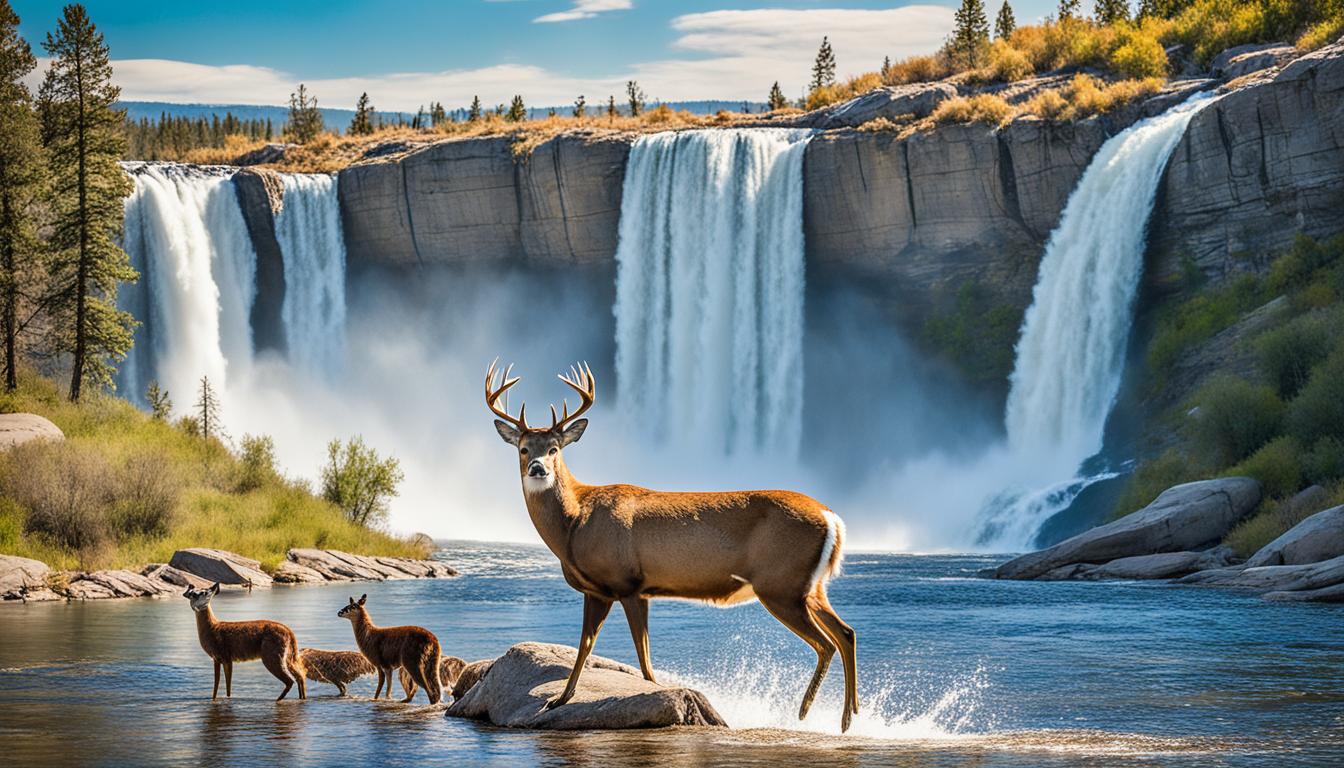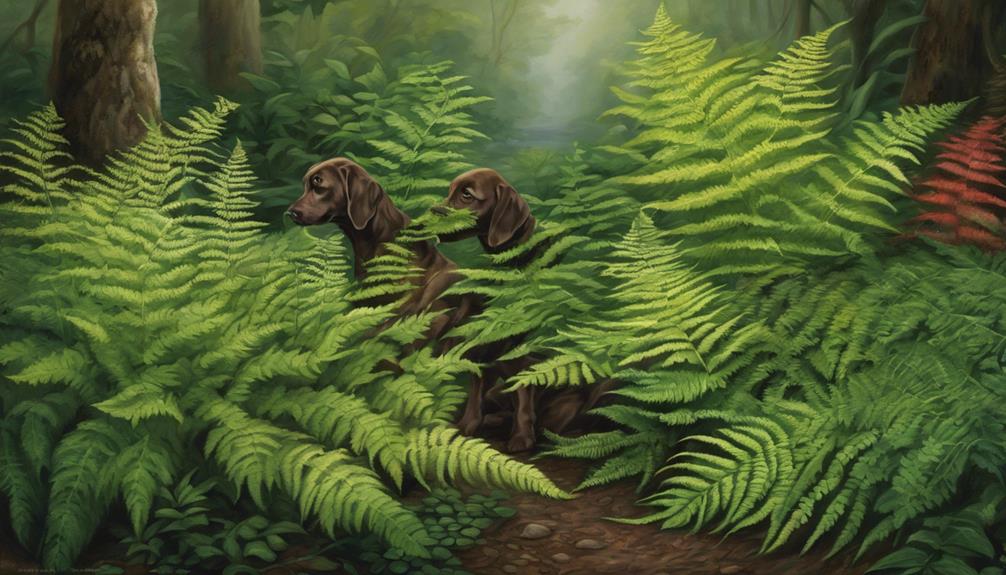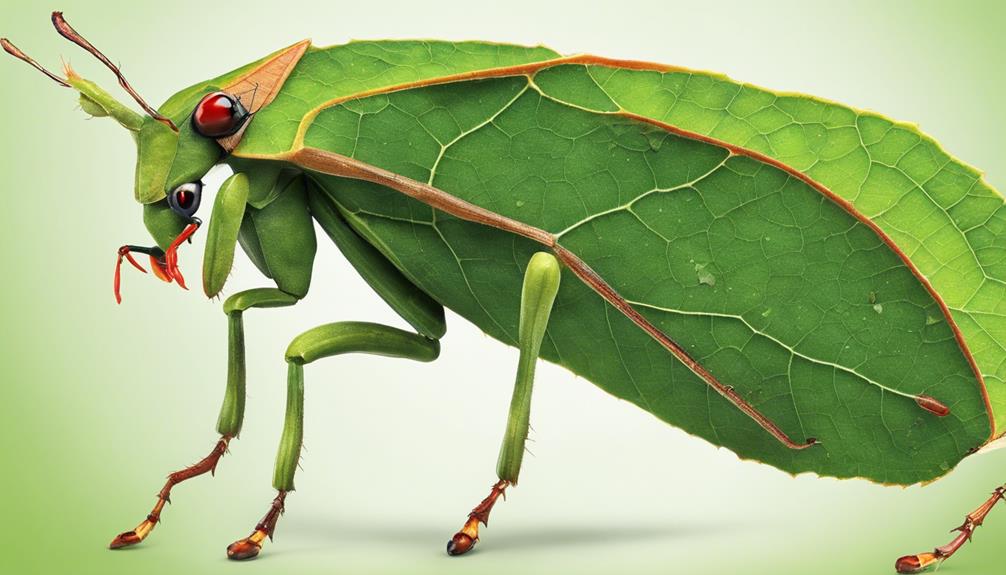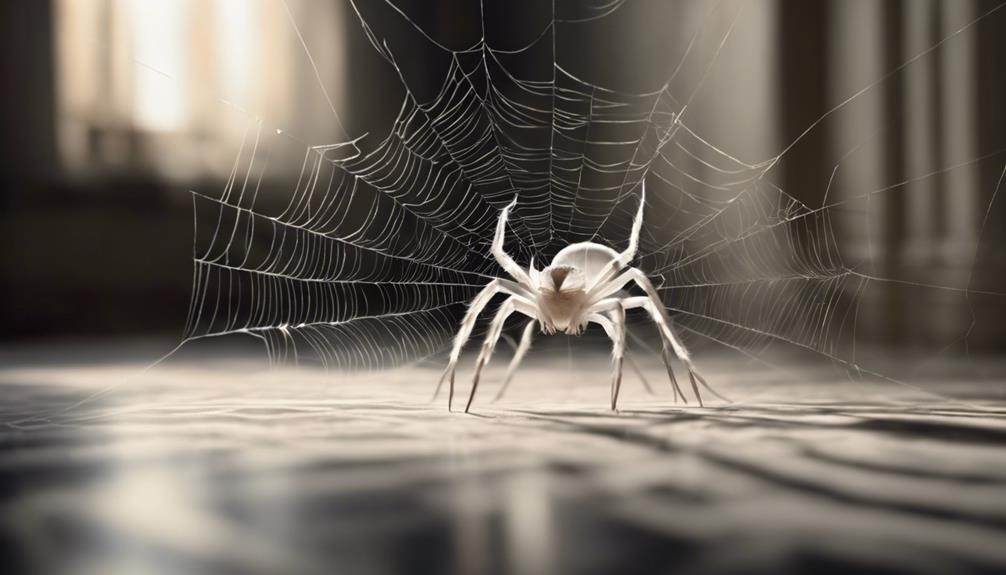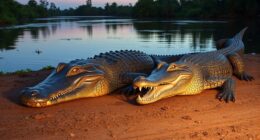Did you know that a **whale shark** and a **white ferret** are among the intriguing animals that start with the letter ‘W’? These creatures captivate us with their unique qualities and behaviors. Let’s explore a variety of fascinating creatures starting with ‘W,’ learn about their habitats, characteristics, and their important roles in ecosystems. Get ready to dive into the enchanting world of animals starting with ‘W’! Discover the wonders of wildlife awaiting you!
Key Takeaways:
- Animals that start with ‘W’ offer a wide range of fascinating and unique characteristics.
- From the small and adorable wallaby to the majestic and enormous whale shark, there is a diverse array of wildlife with names starting with ‘W’.
- These animals inhabit various habitats, including forests, grasslands, oceans, and rainforests.
- Animals that start with ‘W’ play vital roles in their ecosystems, contributing to seed dispersal, maintaining insect populations, and balancing marine ecosystems.
- Exploring the world of animals that start with ‘W’ allows us to appreciate the rich diversity and wonders of the natural world.
Wallaby – A Small Macropod Native to Australia
The wallaby is a small macropod native to the regions of Australia and New Guinea. It is also introduced in New Zealand, Hawaii, the United Kingdom, and other countries.
Wallabies are known for their big back feet, tiny front feet, and cozy pouches for their baby wallabies. They are nature’s comedians, often seen munching on poppy fields and bouncing around in funny positions. These adorable creatures are primarily found in forested habitats and are most active at night.
Here are some interesting facts about wallabies:
- Wallabies belong to the family Macropodidae, which means “big foot”.
- There are about 30 different species of wallabies, including the agile wallaby, the red-necked wallaby, and the swamp wallaby.
- They are herbivores and primarily feed on grass, herbs, leaves, and shrubs.
- Wallabies have powerful hind legs that allow them to jump long distances and reach speeds of up to 30 miles per hour.
- They have a unique reproductive system where the female wallaby has a pouch in her abdomen where she carries and nurses her young, called joeys.
Wallabies play an important role in their ecosystems as they help maintain the balance of plant populations through their grazing habits. They also provide food for predators such as dingoes and eagles.
Did you know? Wallabies are marsupials, which means they give birth to relatively undeveloped young that continue to grow and develop inside their mother’s pouch.
Overall, wallabies are fascinating creatures that showcase the diversity of wildlife in Australia. Their unique adaptations and behaviors make them a delight to observe in their natural habitats.
Warthog – A Wild Pig from Africa’s Grasslands
The warthog, a member of the pig family, is a fascinating creature found in the grasslands, savannas, and woodlands of sub-Saharan Africa. With its distinctive features such as large tusks and wart-like patches on its face, the warthog’s appearance is both intimidating and unique.
Contrary to its fierce exterior, the warthog is actually an herbivore, relying on a diet consisting mainly of grass, roots, and bulbs. This adaptable wild pig has successfully thrived in Africa’s diverse ecosystems, playing an important role in maintaining the balance of its habitat.
Known for its keen survival instincts, the warthog has evolved specialized adaptations that enable it to navigate and thrive in its grassland environment. Its large tusks are not only used for defense but also for digging and rooting up edible vegetation.
The warthog’s habitat in the African grasslands provides ample opportunities for it to display its unique behaviors. Whether it is searching for food or socializing with its fellow warthogs, this wild pig exhibits a captivating display of agility and determination.
Let’s take a closer look at the fascinating features and behaviors of the warthog:Distinctive Features:
The warthog’s most recognizable features are its large curved tusks and facial warts, which serve as protection during conflicts with predators and rival warthogs.
Habitat:
The warthog is predominately found in the grasslands, savannas, and woodlands of sub-Saharan Africa, where it coexists with other wildlife such as zebras, antelopes, and lions.
Behavior and Diet:
The warthog exhibits both diurnal and nocturnal behavior, foraging for food during the cooler parts of the day and resting in its burrows to escape the heat. Its diet primarily consists of grass, roots, and bulbs.
With its distinct appearance and intriguing behaviors, the warthog is a remarkable wild pig that exemplifies the beauty of Africa’s grasslands and its unique wildlife.
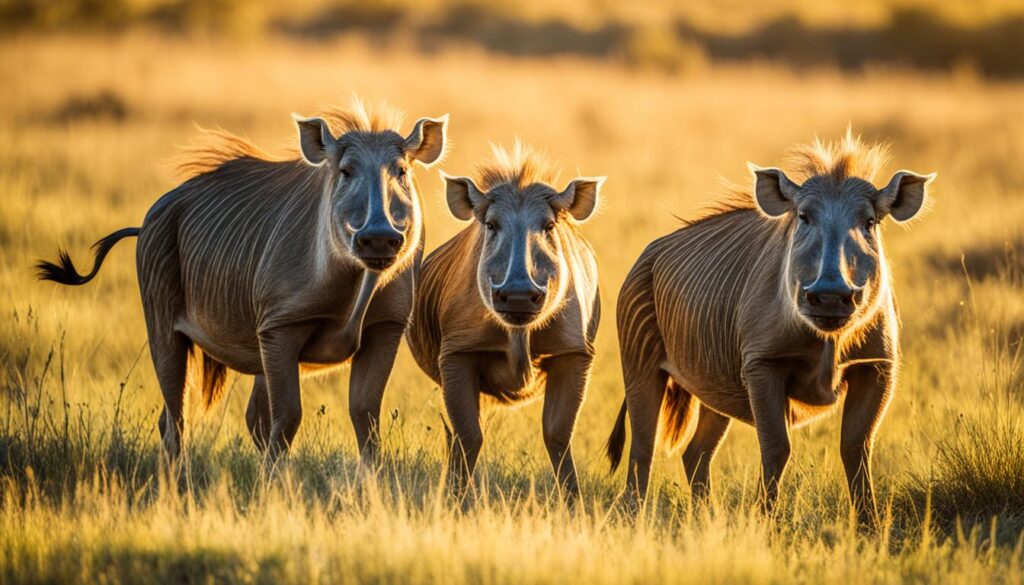
Water Buffalo – A Large Bovid Native to Southeast Asia
The water buffalo, also known as the domestic water buffalo or Asian water buffalo, is a large bovid originating in the Indian subcontinent and Southeast Asia. It is a versatile and adaptable animal and is found in various habitats across the world, including Europe, Australia, North America, South America, and some African countries.
Water buffaloes are known for their size, strength, and contributions to agriculture. They have played a significant role in human civilization, being used for plowing fields, transportation, and milk production. In Southeast Asia, water buffaloes are particularly revered for their importance to farming communities.
While the water buffalo is primarily associated with Southeast Asia, it has thrived in diverse environments, adapting to new climates and geographical conditions. This hardy species has made an impact wherever it has been introduced, showcasing its ability to adapt and survive.
Largest Breeds of Water Buffalo
The water buffalo comes in various breeds, each with its characteristics and advantages depending on the region and specific farming needs. The following table provides an overview of some of the largest water buffalo breeds:
| Breed | Origin | Weight | Height at Shoulder |
|---|---|---|---|
| Sinan | China | 800-1,500 kg | 150-190 cm |
| Murrah | India | 600-800 kg | 140-150 cm |
| Carabao | Philippines | 400-600 kg | 120-150 cm |
| Water buffalo | Italy | 500-900 kg | 140-160 cm |
The water buffalo’s adaptability, strength, and various uses have made it an integral part of agricultural practices in Southeast Asia and beyond. From plowing rice fields to providing nutritious milk and meat, this large bovid plays a crucial role in sustaining communities and economies. Its powerful presence and significant contributions to agriculture make it truly remarkable.
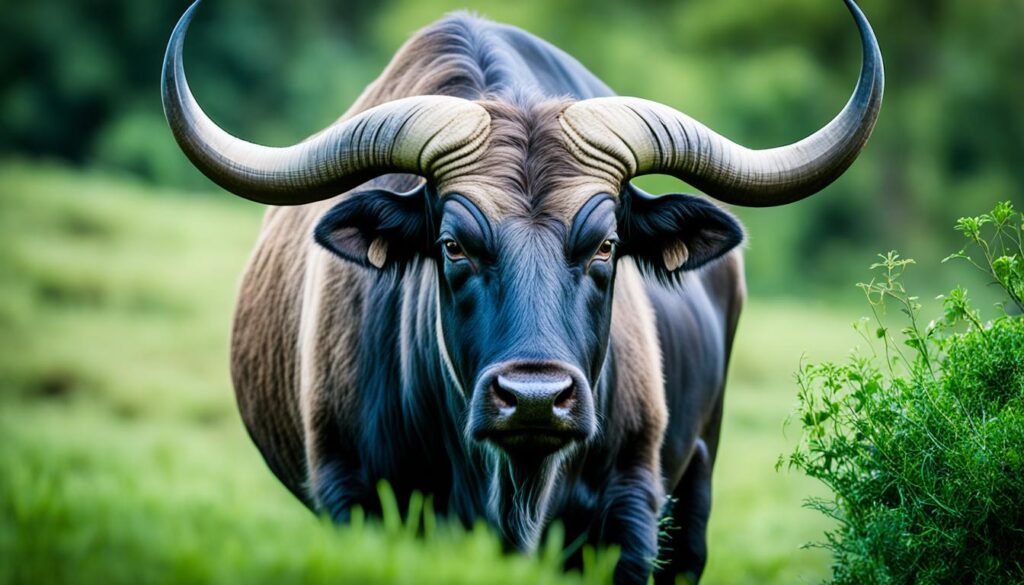
White Tiger – A Majestic Leucistic Pigmentation Variant
The white tiger is a majestic creature found in the wild, characterized by its unique white coloration. Also known as a bleached tiger, it is a leucistic pigmentation variant of the Mainland tiger. It is reported to be found in the wild from time to time in certain regions of India, such as Madhya Pradesh, Assam, West Bengal, Bihar, and Odisha. The white tiger is a fascinating and rare animal that captures our imagination with its striking appearance.
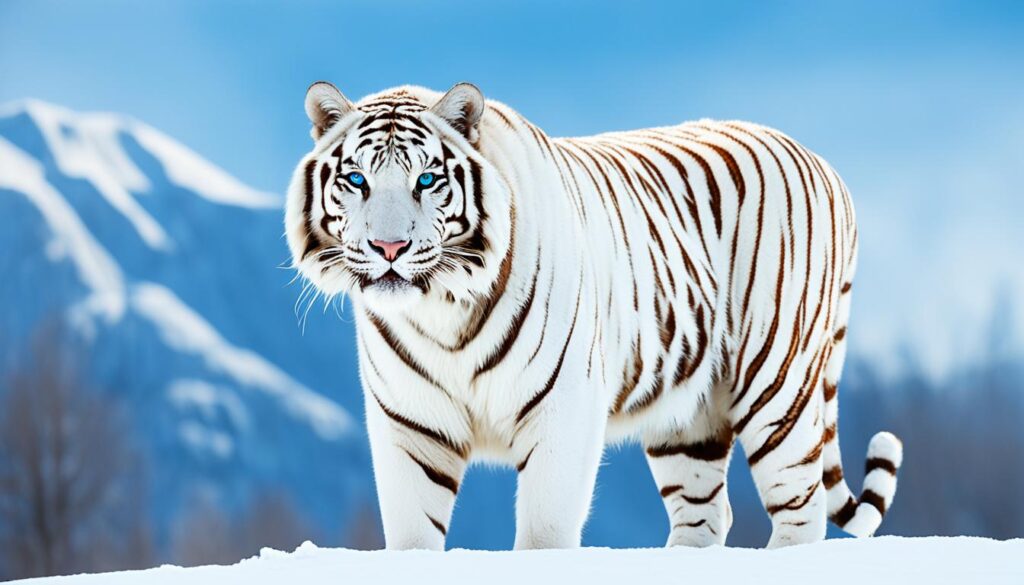
With its snowy white coat and piercing blue eyes, the white tiger stands out as a truly majestic creature. This unique pigmentation variant occurs when there is a recessive gene that inhibits the production of orange and yellow pigments, resulting in a white fur coloration. Although white tigers may appear visually stunning, they face challenges in the wild due to their lack of natural camouflage.
White tigers primarily inhabit dense forests and grasslands, where they have adapted to their environments. Despite being rare, these creatures play an important role in maintaining the population of the Mainland tiger species, as the recessive gene can be passed on to future generations.
White Ferret – A Small Domesticated Species
The white ferret is a small, domesticated species belonging to the family Mustelidae. It is most likely a domesticated form of the wild European polecat, evidenced by their interfertility.
White ferrets are known for their playful and curious nature, making them popular pets among animal lovers. With their sleek white fur and inquisitive eyes, they captivate the hearts of their human companions. These small creatures possess a mischievous charm and are always on the lookout for new adventures.
Although their domestication dates back centuries, white ferrets still retain many of their instinctual behaviors. They exhibit incredible agility and are skilled hunters, making them invaluable for pest control purposes. Their small size allows them to squeeze into tight spaces, enabling them to catch rodents and other small pests with ease.
White ferrets have also been bred extensively for their fur. Their plush coats have long been sought after for use in the fashion industry. However, in recent years, there has been a growing movement towards ethical fur production, prompting a shift towards more sustainable alternatives.
“White ferrets may be small in size, but they possess endless energy and curiosity. Having one in your home is like having a furry little entertainer. They are always ready to engage in playful antics and can brighten up any room with their presence.” – Sarah Johnson, Ferret Enthusiast
Caring for a white ferret requires providing them with a spacious enclosure complete with toys, tunnels, and climbing structures. A balanced diet of high-quality ferret food and occasional treats ensures their nutritional needs are met. Regular exercise and playtime are essential to keep them mentally stimulated and physically active.
With their domestication, white ferrets have become beloved companions and part of many households. Their charming personalities and adaptability make them suitable for families, couples, or individuals looking for a small and lively pet. Whether curled up in their snug beds or pouncing on their favorite toys, white ferrets bring joy and companionship to their owners.
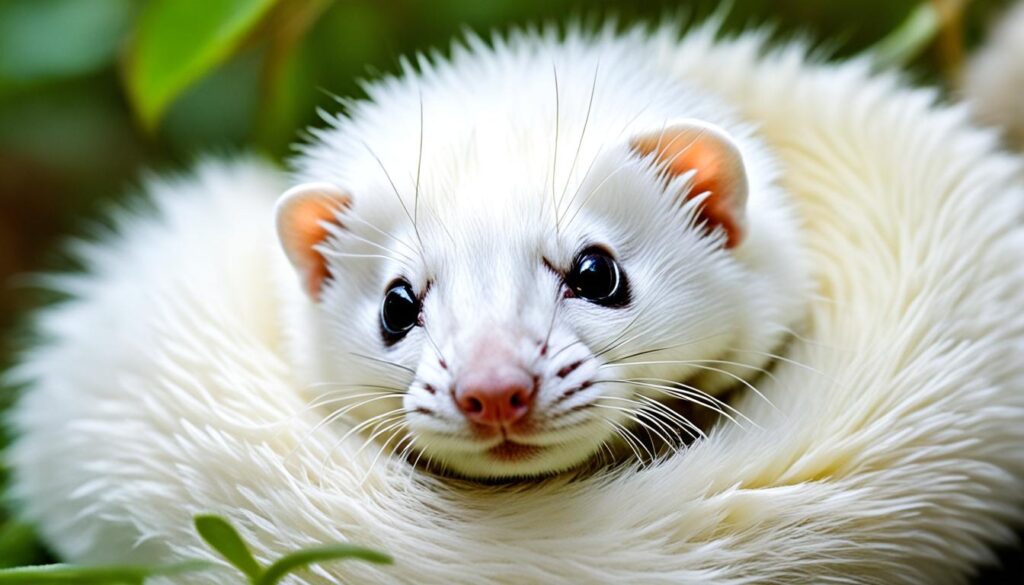
White ferrets are a testament to the unique bond between humans and animals. Their presence in our lives reminds us of the beauty and wonder that can be found in even the smallest of creatures.
Wild Boar – A Widely-Ranging Eurasian Native
The wild boar, also known as the wild swine, common wild pig, Eurasian wild pig, or simply a wild pig, is a suid native to Eurasia and North Africa. It has been introduced to some regions in the Americas and Oceania. The wild boar is known for its adaptable nature and is now one of the widest-ranging mammals in the world, as well as the most widespread suiform. It is a highly adaptable creature found in various habitats, including forests, grasslands, and wetlands.
In Eurasia, the wild boar has a long history of coexistence with humans and is deeply ingrained in local culture and folklore. It is highly valued for its meat, which is used in various traditional dishes. Despite its status as a game animal, the wild boar population has faced challenges due to habitat loss and overhunting.
“The wild boar’s ability to adapt to various habitats and its omnivorous diet make it a successful survivor in different environmental conditions,” says Dr. Emily Reynolds, a wildlife biologist at the Eurasian Wildlife Research Institute. “Its widely-ranging behavior allows it to utilize available resources and thrive in diverse ecosystems.”
The wild boar’s physical appearance is characterized by its muscular build, bristly coat, and iconic tusks, which are elongated canine teeth that curve upward from the mouth. The tusks serve various purposes, including defense, digging for food, and establishing dominance within the social hierarchy. Adult males, known as boars, are typically larger and more robust than females, called sows.
As a species, the wild boar exhibits a variety of behaviors, including foraging, wallowing, and vocalization. They are social animals that live in groups known as sounders, comprising adult females and their offspring. The sounders are led by a dominant female, who is responsible for guiding the group and protecting the young. Adult males, on the other hand, tend to be solitary or form small groups known as bachelor groups.
The wild boar’s omnivorous diet allows it to consume a wide range of food, including roots, tubers, fruits, nuts, invertebrates, and carrion. Their strong snouts and digging abilities enable them to unearth underground food sources and create wallows or nests for resting. This behavior also helps them in dispersing seeds and aerating the soil, contributing to ecosystem health and function.
| Characteristics | Description |
|---|---|
| Size | Adult males can weigh up to 300 kilograms (660 pounds) and measure around 1.6 meters (5 feet 3 inches) in length. Females are smaller, weighing between 100-200 kilograms (220-440 pounds). |
| Habitat | Wild boars inhabit diverse habitats, including forests, woodlands, grasslands, wetlands, and agricultural areas. They are highly adaptable and can thrive in both natural and human-modified landscapes. |
| Reproduction | Wild boars have a polygynous mating system, where dominant males mate with multiple females. Breeding typically occurs in late autumn or early winter, with a gestation period of around 115-120 days. |
| Conservation Status | The wild boar is listed as a species of least concern by the International Union for Conservation of Nature (IUCN). However, localized populations may face threats due to hunting pressure, habitat loss, and competition with introduced species. |

Despite its adaptability, the wide-ranging nature of the wild boar can sometimes lead to conflicts with human activities. They are known to cause damage to agricultural crops, gardens, and natural habitat. Efforts are being made to manage and mitigate these conflicts through methods such as hunting regulations, fencing, and non-lethal deterrents.
As we continue to learn more about the wild boar and its ecological role, it is essential to strike a balance between conservation and sustainable management. By understanding and respecting this Eurasian native, we can ensure its long-term survival and coexistence with human populations.
Whale Shark – The Largest Known Fish Species
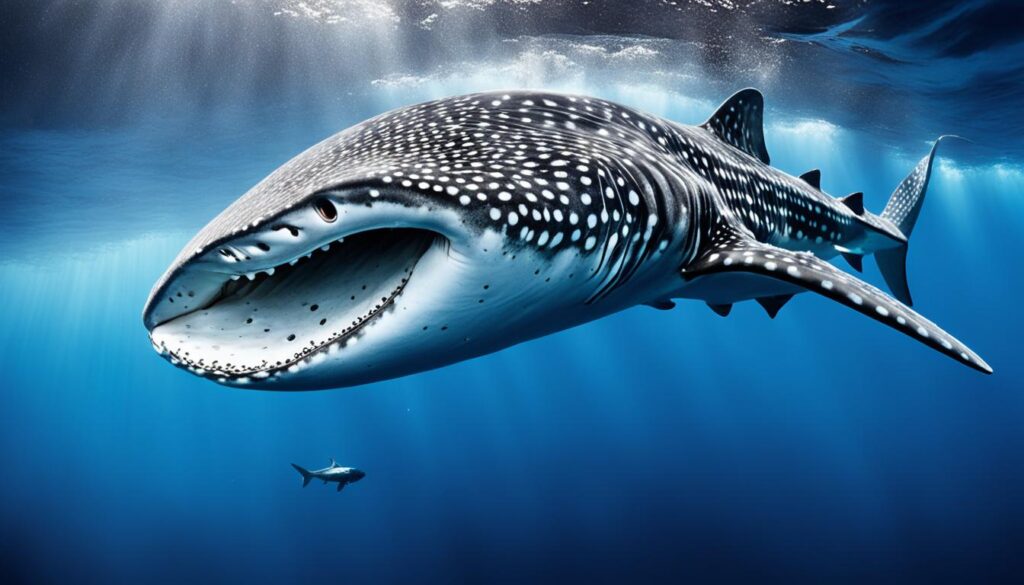
The whale shark is a magnificent creature and holds the title of being the largest known fish species in the world. Its immense size sets many records within the animal kingdom, with the largest confirmed individual measuring an impressive 18.8 meters long. This gentle giant can be found roaming the depths of the ocean, captivating the imaginations of all who encounter it.
Despite its massive proportions, the whale shark is a docile creature that poses no threat to humans. In fact, its diet mainly consists of plankton and small fish, which it captures using its unique filter-feeding method. As the whale shark gracefully swims through the water, it opens its cavernous mouth to scoop up enormous quantities of tiny organisms. It then filters out the water, retaining the nutritious food within its massive body.
The significance of the whale shark extends beyond its size and feeding habits. This magnificent ocean creature plays a crucial role in maintaining the balance of marine ecosystems. By consuming vast amounts of plankton, the whale shark helps control the population of these microscopic organisms, preventing their overabundance and ensuring the health of the entire marine food web.
“The whale shark’s massive size and gentle nature make it a truly awe-inspiring sight. It serves as a reminder of the incredible biodiversity found in the world’s oceans and the importance of preserving these delicate ecosystems.”
Encountering a whale shark in the wild is a truly humbling experience. As you swim alongside this magnificent creature, you can’t help but feel a sense of awe and wonder at the beauty of nature. The whale shark’s presence reminds us of the vastness and diversity of our oceans, and the need to protect and cherish these remarkable environments.
Woolly Monkey – Arboreal Primate of the Rainforests
Woolly monkeys, belonging to the genus Lagothrix of New World monkeys, are fascinating creatures that inhabit the lush rainforests of South America. These arboreal primates have adapted to life in the treetops and play a crucial role in maintaining the delicate balance of rainforest ecosystems.
One of the most distinctive features of woolly monkeys is their dense, wool-like fur, which provides them with excellent insulation in their rainforest habitat. Their fur is also highly prized, making them vulnerable to illegal poaching and habitat destruction.
Woolly monkeys are highly social animals, living in relatively large groups known as troops. These close-knit communities help them navigate the challenging rainforest environment and provide protection against predators. Within the troop, woolly monkeys engage in social grooming, which strengthens the bonds between individuals.
These primates are also known for their prehensile tails, which act as an extra limb, allowing them to maneuver effortlessly through the trees. The tail is used for balance and gripping branches, enabling them to traverse the rainforest canopy with agility and ease.
Woolly monkeys have a diverse diet consisting of fruits, leaves, and insects. Through their feeding habits, they contribute to seed dispersal, aiding in the regeneration of the rainforest. This makes them vital to the overall health and sustainability of their habitat.
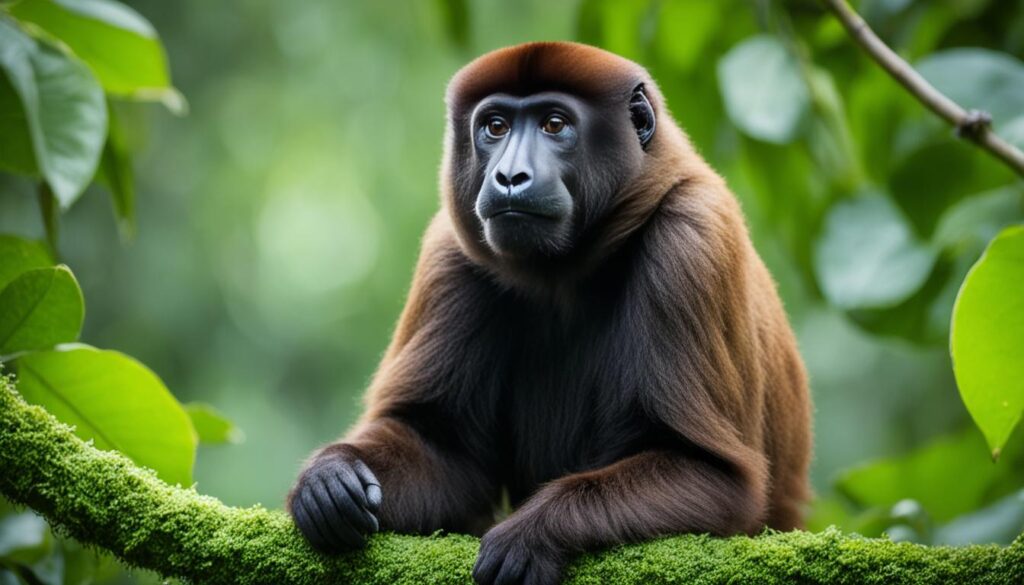
The woolly monkey’s unique adaptations, social structure, and integral role in rainforest ecosystems make it a captivating species to study and protect. By understanding and conserving these remarkable creatures, we can ensure the survival of not just the woolly monkey, but also the rich biodiversity of the rainforests they call home.
Walking Catfish – A Unique Freshwater Airbreather
The walking catfish is a fascinating species of freshwater airbreathing catfish native to Southeast Asia. This unique creature has captured the curiosity of researchers and enthusiasts alike with its exceptional ability to “walk” and wiggle across dry land.
Walking catfish are well adapted to survive in low-oxygen environments, thanks to their specialized structures called labyrinth organs. These organs allow them to extract oxygen from the air, enabling them to breathe outside of water. This remarkable adaptation sets them apart from other fish species and gives them the ability to explore both aquatic and terrestrial habitats.
A key feature that distinguishes the walking catfish from its counterparts is its ability to move across land using its pectoral fins. By flexing and extending their bodies, they can propel themselves forward, resembling a shimmying motion. This clever maneuver allows them to search for food, suitable environments, and even migrate between bodies of water.
The walking catfish primarily inhabits the freshwater ecosystems of Southeast Asia, thriving in rivers, streams, and flooded areas. They are excellent swimmers and possess a streamlined body shape that facilitates their aquatic movements. However, when their habitats become dry or overcrowded, these amazing creatures venture onto land, utilizing their unique walking abilities to seek refuge or find new food sources.
This extraordinary adaptation of the walking catfish showcases the remarkable diversity and ingenuity of nature in Southeast Asia. Their ability to breathe air and traverse land serves as a reminder of the incredible adaptations that organisms can develop to survive and thrive in challenging environments.
Incredible Walking Catfish Facts:
- The walking catfish belongs to the family Clariidae and the genus Clarias.
- They can reach lengths of up to 60 centimeters.
- Walking catfish feed on a variety of prey, including crustaceans, insects, and small fish.
- These catfish are gifted jumpers and can even propel themselves over obstacles on land.
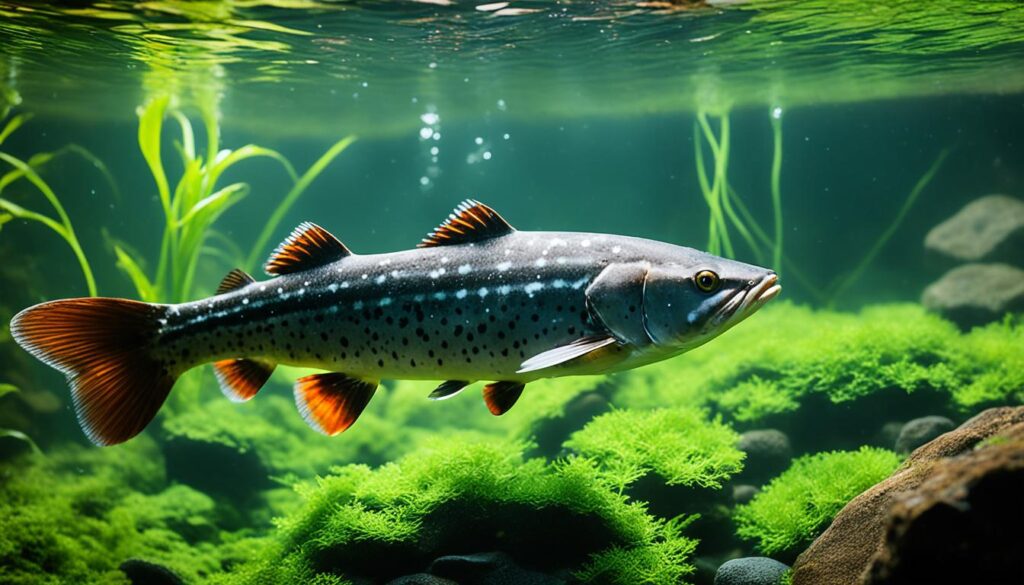
Western Gorilla – A Great Ape Found in Africa
The western gorilla is a species of the great ape found in Africa. Belonging to the genus Gorilla, it is one of the closest living relatives to humans, sharing many social and behavioral traits. Western gorillas primarily inhabit dense forests and are herbivorous, feeding on fruits, leaves, and shoots.
Western gorillas are known for their distinctive chest beating displays, which serve as a form of communication within their complex social structures. These highly intelligent creatures exhibit a wide range of behaviors and are capable of using tools.
“Western gorillas are fascinating creatures. Their close resemblance to humans and their intricate social dynamics make them a subject of great interest and study in the field of primatology.” – Dr. Jane Goodall
In the wild, western gorillas form cohesive family groups led by a dominant silverback male. They have a complex social hierarchy and engage in various social interactions, including grooming, playing, and vocalizing.
The western gorilla is native to several countries in Africa, including Cameroon, Central African Republic, Congo, Equatorial Guinea, and Gabon. It inhabits a range of forested habitats, such as lowland rainforests, swamp forests, and montane forests.
Conservation efforts are crucial for the survival of western gorillas, as they face threats such as habitat loss, poaching, and disease outbreaks. Organizations and researchers are working tirelessly to protect their habitats and raise awareness about the importance of preserving these magnificent creatures.
Habitat and Distribution
The western gorilla primarily inhabits the forests of Central Africa. There are two subspecies: the western lowland gorilla (Gorilla gorilla gorilla) and the Cross River gorilla (Gorilla gorilla diehli).
The western lowland gorilla is the most widespread and populous of the gorilla subspecies. It can be found in countries including Cameroon, Congo, Equatorial Guinea, Gabon, and Nigeria. It prefers lowland rainforests and swamp forests.
The Cross River gorilla is the most endangered gorilla subspecies, with a population of fewer than 300 individuals. It is found in the mountainous regions between Nigeria and Cameroon, primarily in the Cross River National Park.
Conservation Status
The conservation status of the western gorilla is categorized as critically endangered by the International Union for Conservation of Nature (IUCN). The primary threats to their survival are habitat destruction due to logging and agriculture, illegal hunting, and infectious diseases transmitted by humans.
Efforts to protect western gorillas involve establishing and managing protected areas, implementing anti-poaching measures, and promoting sustainable livelihoods for local communities. Research and monitoring programs also play a vital role in understanding their behavior, population dynamics, and health.
Western Gorilla Subspecies Comparison
| Subspecies | Distribution | Population | Conservation Status |
|---|---|---|---|
| Western lowland gorilla (Gorilla gorilla gorilla) | Cameroon, Congo, Equatorial Guinea, Gabon, Nigeria | Approximately 100,000 individuals | Endangered |
| Cross River gorilla (Gorilla gorilla diehli) | Nigeria, Cameroon (Cross River National Park) | Less than 300 individuals | Critically Endangered |
Note: Populations of western gorillas are estimates and subject to change due to ongoing research and survey efforts.

Woodpecker – A Noisy Bird with Special Adaptations
Woodpeckers are a diverse group of birds found worldwide, with over 200 different species. They are known for their distinctive drumming sounds, created by pecking on trees. Woodpeckers have unique adaptations, such as a strong beak and a specialized tongue, that allow them to excavate tree trunks for food and create nesting cavities. They primarily feed on insects, larvae, and tree sap. Woodpeckers are important for maintaining healthy forest ecosystems by controlling insect populations and creating habitat for other species.
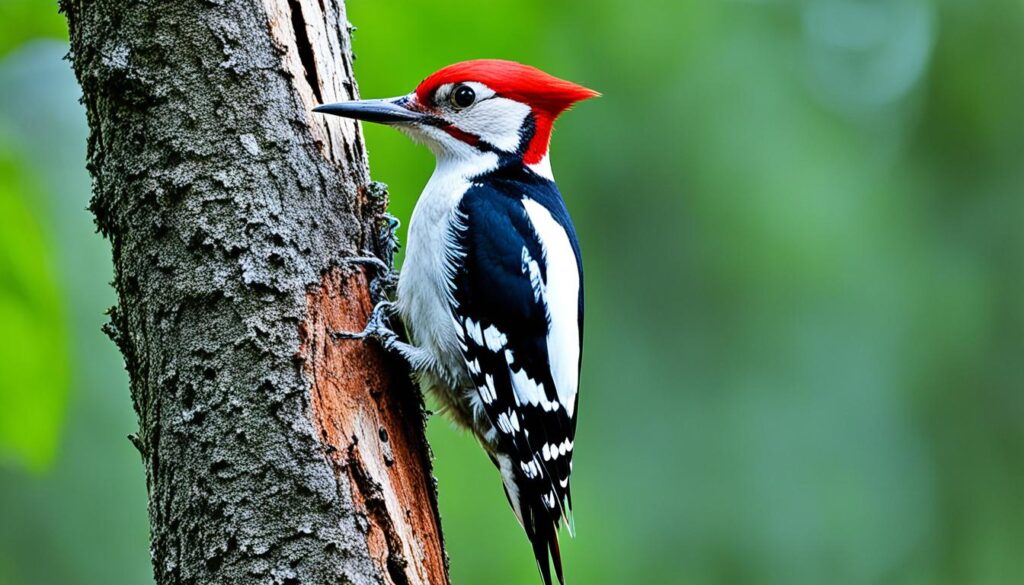
Special Adaptations of Woodpeckers
Woodpeckers have evolved special adaptations that enable them to excel at their unique feeding and nesting behavior:
- Strong Beak: The woodpecker’s beak is long, straight, and incredibly strong. It allows them to chisel away at tree trunks with remarkable force, pecking at a rate of up to 20 times per second.
- Specialized Tongue: Woodpeckers have a remarkable tongue that wraps around the back of their head, protecting their brain from the impact of their drumming. The tongue is also long and sticky, perfect for extracting insects and larvae from crevices in the wood.
- Shock Absorbing Skull: To protect their brain from the constant impact of drumming, woodpeckers have a dense skull with a spongy bone layer that acts as a shock absorber.
- Strong Feet: Woodpeckers have two sharp-clawed toes facing forward and two backward-facing toes. This unique foot structure allows them to grip onto tree trunks tightly, providing stability and leverage while pecking and climbing.
- Barbed Tongue Tips: Some woodpecker species, such as the sapsuckers, have specialized tongue tips with bristles or barbs. These adaptations allow them to lap up sap from trees by collecting it on their tongue.
Woodpeckers play a crucial role in forest ecosystems as they help control insect populations by feeding on wood-boring insects and larvae. Their excavations also create nesting cavities that are used by other bird species for shelter and breeding.
Woodpeckers are fascinating birds that showcase the incredible adaptations found in nature. Their noisy drumming sounds and unique feeding behaviors make them a joy to observe in the wild.
Conclusion
In conclusion, animals that start with the letter ‘W’ offer a fascinating glimpse into the diversity of the animal kingdom. From unique mammals like the walrus and wolverine to fascinating birds like the whale and woodpecker, these animals have adapted to various habitats and evolved distinct traits and behaviors.
Whether they roam the land, swim in the ocean, or fly through the sky, animals that start with ‘W’ contribute to the delicate balance of ecosystems and remind us of the wonders of the natural world.
With their incredible adaptations and intriguing characteristics, these animals captivate our attention and inspire us to appreciate the rich biodiversity that exists on our planet. By learning about and protecting these fascinating creatures, we can ensure the preservation of their habitats and contribute to the conservation of the natural world for future generations.
